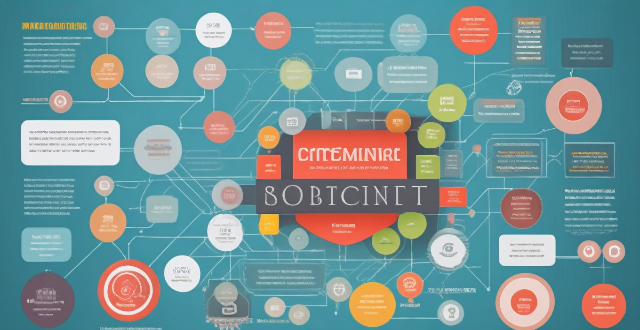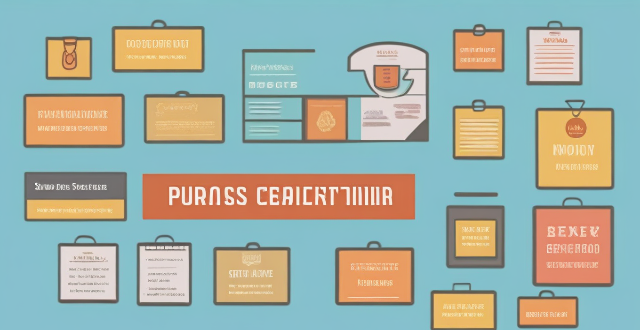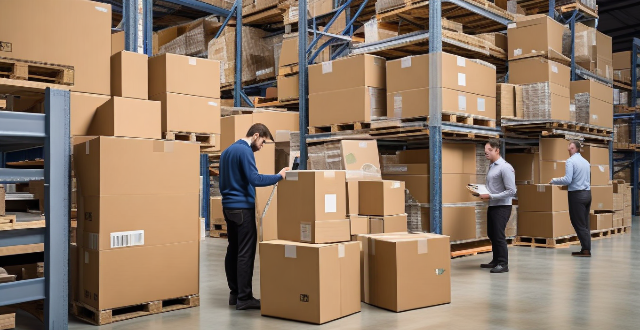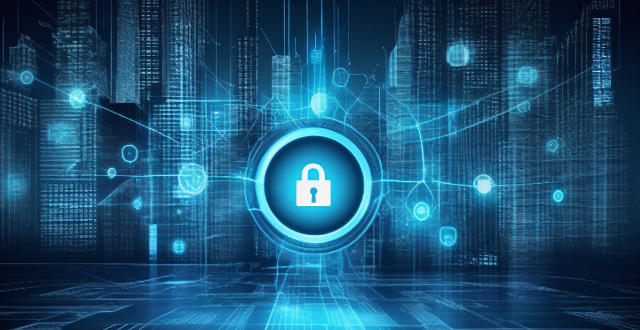Item Transactions

How do I ensure safe transactions when buying or selling second-hand goods online ?
When engaging in online transactions for second-hand goods, it is crucial to take precautions to ensure the safety and security of both parties involved. Here are some tips on how to do so: Research the Seller/Buyer: Check reviews and ratings, verify identity, and be cautious about sharing personal information. Use Secure Payment Methods: Avoid cash transactions, protect financial information, and opt for secure payment methods such as PayPal or credit cards. Meet in Public Places: Arrange for public meetings and bring a friend along for extra security. Inspect the Item Before Purchasing: Thoroughly inspect the item, ask questions, and ensure it matches the description provided by the seller. Keep Records of the Transaction: Save conversation history and request receipts or invoices to document the transaction.

How does digital identity verification work in online transactions ?
Digital Identity Verification in Online Transactions: A Comprehensive Guide Digital identity verification is a crucial aspect of online transactions, ensuring the authenticity and security of users. This process involves collecting personal information, verifying it against reliable sources, employing multi-factor authentication, using encryption techniques, and implementing monitoring systems to detect fraudulent activities. By following these steps, businesses can protect their customers' sensitive data and maintain trust in the digital marketplace.

How do I know if a luxury item is worth the price tag ?
When it comes to purchasing a luxury item, it is important to consider several factors before making a decision. Here are some tips on how to determine if a luxury item is worth the price tag: ## 1\. Research the brand and product - **Brand reputation**: Look into the brand's history, heritage, and reputation for quality craftsmanship. - **Product quality**: Examine the materials used, construction, and overall design of the item. - **Comparison shopping**: Compare similar items from other luxury brands to see if the price is justified. ## 2\. Consider your personal needs and preferences - **Functionality**: Will the item serve a practical purpose in your life, or is it purely for aesthetic purposes? - **Personal style**: Does the item align with your personal style and taste? - **Usage frequency**: Will you use the item frequently enough to justify the cost? ## 3\. Evaluate resale value - **Popularity**: Is the item popular among collectors or enthusiasts? - **Condition**: Is the item well-maintained and in good condition? - **Market demand**: Is there a high demand for this type of luxury item? ## 4\. Seek professional advice - **Expert opinions**: Consult with experts in the field, such as luxury goods appraisers or collectors. - **Online forums**: Join online communities dedicated to luxury goods and seek advice from fellow enthusiasts. - **Sales associates**: Ask sales associates at luxury stores for their recommendations and insights. ## 5\. Trust your instincts - **Emotional connection**: Do you feel a strong emotional connection to the item? - **Guilt-free spending**: Can you afford the purchase without feeling guilty or stressed about the cost? - **Long-term satisfaction**: Will owning this item bring you long-term satisfaction and happiness? In conclusion, determining whether a luxury item is worth the price tag requires careful consideration of various factors, including brand reputation, product quality, personal needs and preferences, resale value, professional advice, and trusting your instincts. By taking these factors into account, you can make an informed decision about whether a luxury item is truly worth its price tag.

How can I determine the value of a second-hand item before purchasing it ?
When considering purchasing a second-hand item, itWhen considering purchasing a second-hand item, it its value to ensure you' it's important to determine its value to ensure you're getting a fair deal. Here are some steps to help you assess the value of a pre-owned item: 1. Research the market price by checking online marketplaces, consulting auction houses, and reading reviews and forums. 2. Evaluate the condition of the item by inspecting for damage, considering age and obsolescence, and testing functionality. 3. Negotiate with the seller by making an offer based on your research and evaluation, being prepared to walk away if necessary, and asking for more information if needed.

How can I verify the authenticity of a second-hand luxury item ?
This guide provides a comprehensive approach to verifying the authenticity of second-hand luxury items, emphasizing research on the seller's reputation, physical inspection, checking for authenticity marks, requesting proof of authenticity, and utilizing online verification tools. It also suggests additional tips such as understanding common fake indicators and consulting with experts for high-value purchases.

What are some tips for successfully haggling over the price of a second-hand item ?
Successfully haggling over the price of a second-hand item requires research, politeness, starting low but reasonable, highlighting flaws, offering cash payment, being willing to walk away, using silence to your advantage, and considering bundle deals.

Can I use Cross-Border Payment for personal transactions ?
Cross-border payment systems are designed to facilitate international transactions, allowing individuals and businesses to send and receive money across borders. These systems can be used for various purposes, including personal transactions. In this article, we will discuss the use of cross-border payment systems for personal transactions and provide some tips on how to make the most of them. Cross-border payment refers to the process of transferring money from one country to another. This can be done through various methods, such as wire transfers, credit cards, or digital wallets. The main purpose of cross-border payment systems is to simplify the process of sending and receiving money internationally, making it easier for people to conduct business or personal transactions with others around the world. While cross-border payment systems are primarily used for business transactions, they can also be used for personal transactions. Here are some examples of when you might use a cross-border payment system for personal transactions: Sending Money to Friends and Family Abroad: If you have friends or family members living in another country, you may need to send them money occasionally. Cross-border payment systems allow you to do this quickly and easily, without having to worry about exchange rates or bank fees. Paying for Online Shopping: Many online retailers offer international shipping, allowing you to purchase goods from other countries. When paying for these purchases, you can use a cross-border payment system to ensure that your payment is processed securely and efficiently. Travel Expenses: When traveling abroad, you may need to pay for expenses such as accommodation, transportation, or food. Cross-border payment systems can be useful in these situations, as they allow you to make payments in local currencies without having to carry large amounts of cash. To make the most of cross-border payment systems for personal transactions, consider the following tips: Choose the Right Provider: Not all cross-border payment systems are created equal. Some may offer better exchange rates or lower fees than others. Research different providers before choosing one to ensure that you get the best deal possible. Understand Fees and Exchange Rates: Before making any cross-border payment, be sure to understand the fees and exchange rates involved. Some providers may charge additional fees for certain types of transactions, so it's important to know what you're getting into before sending money. Keep Track of Your Transactions: When using cross-border payment systems for personal transactions, it's important to keep track of your transactions. This will help you stay organized and ensure that you don't overspend or lose track of your finances. Be Aware of Scams: Unfortunately, there are scammers who target people using cross-border payment systems. Be cautious when sharing personal information or sending money to someone you don't know well. If something seems suspicious, trust your instincts and report it to the appropriate authorities. In conclusion, cross-border payment systems can be a convenient and efficient way to handle personal transactions with people in other countries. By choosing the right provider, understanding fees and exchange rates, keeping track of your transactions, and being aware of potential scams, you can make the most of these systems and enjoy smoother international financial interactions.

What is blockchain technology and how does it relate to cryptocurrency ?
Blockchain technology is a decentralized, distributedBlockchain technology is a decentralized, distributed transactions in a secure and im It is the foundational structure for cryptocurrencies, which are digital or virtual currencies that use cryptography for security and operate independently of a central bank. The key features of blockchain include decentralization, immutability, transparency, and security. Cryptocurrencies rely on blockchain technology to maintain a transparent and secure system for recording transactions without intermediaries like banks. Transactions are validated by network participants through consensus algorithms like Proof of Work (PoW) or Proof of Stake (PoS), and new coins can be issued as rewards for those who validate transactions and maintain the network. Overall, blockchain technology enables a peer-to-peer electronic cash system that is both secure and decentralized.

Can blockchain technology revolutionize the financial industry ?
Blockchain technology has the potential to revolutionize the financial industry by introducing a decentralized, transparent, and secure way of conducting transactions. In this article, we will explore how blockchain technology can transform the financial sector and discuss its benefits and challenges. Benefits of Blockchain in Finance: - Decentralization: Elimination of intermediaries and increased efficiency. - Transparency: Immutable records and audit trail for regulatory compliance. - Security: Distributed ledger and cryptography ensure secure transactions. Challenges of Blockchain in Finance: - Regulatory uncertainty: Lack of clear regulations and compliance issues. - Scalability: Limited throughput and ongoing research for scaling solutions. - Interoperability: Integration with legacy systems and lack of standardization. Potential Use Cases for Blockchain in Finance: - Payments and Remittances: Faster and cheaper cross-border transactions. - Trade Finance: Streamlined processes and automated smart contracts. - Securities Settlement: Real-time settlement and fractional ownership of assets. In conclusion, blockchain technology has the potential to revolutionize the financial industry by introducing a decentralized, transparent, and secure way of conducting transactions. While there are challenges to overcome, such as regulatory uncertainty, scalability concerns, and interoperability issues, the benefits of blockchain in finance are undeniable. As the technology continues to evolve and mature, we can expect to see increased adoption and innovation in the financial sector powered by blockchain technology.

How can smart contracts be used to streamline financial transactions ?
Smart contracts can streamline financial transactions by automating processes, reducing costs, and increasing efficiency. They can automate payments and transfers, act as escrow services, create loan agreements, streamline insurance claims, and facilitate trading and exchanges of financial assets. As blockchain technology evolves, we can expect more innovative uses for smart contracts in the financial industry.

What is the role of blockchain in the financial industry ?
Blockchain technology has emerged as a game-changer in the financial industry, offering unprecedented levels of security, transparency, and efficiency. Its decentralized nature and immutable ledger system have paved the way for innovative applications that are reshaping the financial landscape. In this article, we will explore the various roles of blockchain in the financial industry. One of the key advantages of blockchain is its ability to create trust without the need for intermediaries. Traditional financial systems rely on central authorities, such as banks or clearinghouses, to verify and record transactions. With blockchain, transactions are verified by a network of nodes, each of which maintains a copy of the ledger. This decentralized approach eliminates the need for intermediaries, reducing costs and increasing efficiency. Blockchain provides a transparent and auditable ledger of all transactions. Each transaction is recorded on the blockchain in a tamper-resistant manner, ensuring that any attempt to alter the ledger will be immediately apparent. This level of transparency enhances accountability and reduces the risk of fraud or errors. Smart contracts are self-executing contracts with the terms of the agreement between buyer and seller being directly written into lines of code. These contracts can automatically execute transactions when certain conditions are met, eliminating the need for intermediaries and reducing the risk of non-performance or disputes. Smart contracts have the potential to revolutionize many areas of finance, including insurance, real estate, and supply chain management. Distributed ledger technology (DLT) is at the heart of blockchain's capabilities. It allows multiple parties to have access to a shared database that is secure, transparent, and tamper-proof. DLT enables faster settlement times, improved cash management, and reduced operational risks. It also facilitates cross-border payments and remittances, making them more efficient and cost-effective. Tokenization involves representing physical assets, such as stocks, bonds, or real estate, as digital tokens on a blockchain. This process enables fractional ownership, easier transferability, and increased liquidity. Tokenization also allows for programmable assets, where rules can be embedded into the tokens themselves, enabling automated compliance with regulations and contractual obligations. Blockchain can be used to create a secure and decentralized identity verification system. This system would allow individuals to control their own identity information and share it selectively with third parties while maintaining privacy. Such a system could significantly reduce identity fraud and streamline processes that require identity verification, such as opening bank accounts or applying for loans. Blockchain's transparency and immutability make it an ideal tool for regulatory compliance. By using blockchain to record all financial activities, regulators can easily monitor and analyze transactions in real-time, identifying potential violations and enforcing compliance more effectively. This could lead to more efficient regulation and better protection for consumers and investors. In conclusion, blockchain technology has the potential to transform the financial industry by improving efficiency, reducing costs, enhancing security, and promoting transparency. From decentralization and trust to smart contracts and tokenization, blockchain is poised to disrupt traditional financial models and create new opportunities for innovation and growth. As adoption continues to accelerate, we can expect to see even more exciting developments in the years ahead.

What is a smart contract ?
Smart contracts are self-executing contracts with the terms of the agreement between buyer and seller being directly written into lines of code, which exist across a distributed, decentralized blockchain network. They allow for transactions and the transfer or distribution of cryptocurrencies to be executed automatically without the need for a central authority, legal system, or external enforcement mechanism. Smart contracts are autonomous, immutable, traceable, and decentralized. They have various use cases such as cryptocurrency transactions, insurance claims, supply chain management, real estate transactions, gambling and betting, and legal documents. The benefits of smart contracts include efficiency, transparency, security, speed, and accuracy. However, there are challenges and considerations such as code quality, lack of legal recognition, interoperability issues, and privacy concerns.

What is the ideal way to pack fragile items for a journey ?
Packing fragile items for a journey can be a daunting task, but with the right approach, you can ensure that your precious belongings arrive at their destination safely. Here are some tips on how to pack fragile items ideally: 1. Use proper packing materials such as bubble wrap, packing paper, foam peanuts, and anti-static polyethylene bags. 2. Wrap each item individually to reduce the risk of damage during transit. 3. Use boxes of appropriate size to accommodate the item without too much extra space or pressure. 4. Label boxes appropriately with clear, legible writing to indicate that the box contains fragile items and which direction is up.

How can I effectively describe my second-hand items to attract buyers ?
When selling second-hand items, it's important to provide a clear and compelling description that captures potential buyers' attention. Here are some tips on how to effectively describe your items: 1. Keep the title short and sweet, using keywords related to the item and mentioning the brand and model if applicable. 2. Provide a brief overview of the item's condition and features, and mention any standout qualities or unique aspects. 3. Clearly state the condition of the item, using descriptive words like "like new," "gently used," or "well-loved." If there are any flaws or damages, mention them explicitly. 4. Highlight the main features and benefits of the item, using bullet points for easy reading and emphasizing any additional accessories or bonus items included. 5. Include multiple high-quality photos showing different angles and details, making sure they are well-lit and focused. Consider adding a photo of the item in use or with a size reference. 6. Set a fair price by researching similar items to determine a competitive price point, and consider offering a negotiation range or stating "firm" if you're not willing to budge. 7. Mention where you are located and whether local pickup is available, and if you offer shipping, specify the cost and estimated delivery time. 8. Provide a way for interested buyers to contact you, such as an email address or phone number, and consider adding a link to your profile or website for more information about other items you may have listed. By following these guidelines, you can create an effective description that will help attract potential buyers and increase your chances of successfully selling your second-hand items.

Can I trust cashback websites for my online transactions ?
Cashback websites can offer significant savings and convenience, but also come with certain risks and limitations. To safely enjoy the benefits they provide, users should research thoroughly, check privacy policies, monitor accounts, read terms & conditions, and use secure networks. By being cautious and informed, one can avoid potential downsides such as privacy concerns, delayed payments, limited redemption options, scams, and hidden fees.

What are the tax implications of investing in cryptocurrencies ?
Investing in cryptocurrencies can have significant tax implications that investors should be aware of. Here are some key considerations: ### Capital Gains Tax Capital gains tax is a tax on the profit realized on the sale of an asset. When you sell your cryptocurrency for more than you paid for it, you may owe capital gains tax on the difference between the purchase price and the selling price. The tax rate depends on your income level and how long you held the asset before selling it. - Short-term capital gains tax applies to assets held for less than a year and is taxed at your ordinary income tax rate. - Long-term capital gains tax applies to assets held for more than a year and is typically taxed at a lower rate than short-term gains. ### Income Tax If you earn income from mining or staking cryptocurrency, you may owe income tax on that income. Mining involves using computer processing power to validate transactions on the blockchain and earn new coins as a reward. Staking involves holding coins in a wallet and earning interest or rewards for supporting the network. Both activities can generate taxable income. ### Tax Deductions You may be able to deduct certain expenses related to your cryptocurrency investments, such as trading fees, software costs, and other expenses necessary to maintain your investment. However, these deductions are subject to specific rules and limitations, so consult with a tax professional to ensure you qualify. ### Reporting Requirements The IRS requires taxpayers to report all cryptocurrency transactions on their tax returns, including purchases, sales, trades, and income earned from mining or staking. Failure to report these transactions can result in penalties and interest charges. It's essential to keep accurate records of all your cryptocurrency transactions throughout the year. ### Tax Planning Strategies To minimize your tax liability when investing in cryptocurrencies, consider implementing tax planning strategies such as: - **Holding Assets Long-Term**: By holding your cryptocurrency for more than a year before selling it, you can take advantage of lower long-term capital gains tax rates. - **Harvesting Losses**: If you have losses on some of your cryptocurrency investments, you can offset those losses against gains made on other investments to reduce your overall tax liability. - **Donating Cryptocurrency to Charity**: Donating cryptocurrency to a qualified charity can provide a tax deduction while also supporting a cause you care about. In conclusion, investing in cryptocurrencies has several tax implications that investors should be aware of and plan for accordingly. It's essential to stay informed about changing regulations and consult with a tax professional to ensure compliance with IRS requirements.

How can I find reliable sources for buying and selling used goods ?
To find reliable sources for buying and selling used goods, it's essential to conduct thorough research, choose trusted online marketplaces, verify seller information, ask for detailed descriptions and photos, use payment methods that offer protection, be wary of scams, consider professional resellers, and inspect items before purchasing. By following these steps, buyers can minimize risks associated with such transactions and ensure they get the best value for their money.

How can I make money by selling my used goods ?
Selling used goods is a great way to declutter your home and make some extra cash. Here are the steps you can follow to successfully sell your used items: 1. Determine what to sell by going through your belongings and deciding which ones you no longer need or use. You can sell anything from clothes and electronics to furniture and books. 2. Research the market value of your items by checking online marketplaces like eBay, Craigslist, or Facebook Marketplace to see how much similar items are selling for. This will help you price your items competitively. 3. Clean and repair your items before listing them for sale. Make sure they are in good condition and free of any damages or flaws that could affect their value. 4. Take high-quality photos of your items using natural lighting and a neutral background. Include multiple angles and close-ups of any unique features or details. 5. Write a compelling description that is honest about the item's condition and provides as much detail as possible, including brand, size, color, and any relevant history or stories associated with the item. 6. Choose a selling platform that best suits your needs and target audience, such as eBay, Craigslist, or Facebook Marketplace. 7. Price your items appropriately by considering their condition, age, and demand. Be open to negotiation and be willing to adjust your price if necessary. 8. Promote your listings on social media platforms like Facebook, Twitter, and Instagram to reach a wider audience. Join local buy-and-sell groups on these platforms to connect with potential buyers in your area. 9. Be responsive to buyers when they express interest in your item. Answer any questions they may have and provide additional information if needed. Building trust with potential buyers will increase the likelihood of completing a successful transaction. 10. Arrange for pickup or delivery (if applicable) with the buyer. Make sure to communicate clearly about timing and location details to ensure a smooth transaction process.

What are some essential factors to consider when buying secondhand items ?
When purchasing secondhand items, several essential factors should be considered to ensure the best value for money. These include the condition of the item, its price, the reputation of the seller, authenticity, age and lifespan, and safety and legality. By considering these factors, buyers can make informed decisions and avoid potential pitfalls.

What is the process for returning or exchanging items purchased from international retailers ?
Returning or exchanging items purchased from international retailers involves checking the return policy, contacting customer service, preparing the package, arranging shipping, tracking the shipment, waiting for a refund or exchange, following up if necessary, and considering additional factors like duties, taxes, and currency conversion.

What are some tips for successfully haggling when buying second-hand items ?
Haggling is an art form, especially when it comes to buying second-hand items. It requires a combination of research, negotiation skills, and a bit of luck. Here are some tips to help you successfully haggle and get the best deal possible: 1. **Do Your Research**: Determine market value, understand the seller's motivation, and check for flaws or issues. 2. **Develop Negotiation Skills**: Start low but fair, be polite and respectful, use silence to your advantage, and be willing to walk away. 3. **Leverage Your Position**: Offer cash upfront, bundle items, and provide a counteroffer. 4. **Finalize the Deal**: Get it in writing, inspect before paying, and ask about returns. By following these tips, you can increase your chances of successfully haggling when buying second-hand items. Remember, the key is to do your homework, remain polite yet assertive, and be ready to walk away if necessary. Happy haggling!

What is the process of returning a product in global shopping ?
### Summary: Returning a product purchased through global shopping involves several steps, including checking the return policy, initiating the return process, preparing and shipping the item back, monitoring your refund, documenting the process, and considering international factors such as customs and currency exchange rates. It's important to stay organized, use trackable shipping methods, and keep records of all communications with the seller to ensure a smooth and effective return.

How can I prepare for Black Friday shopping ?
Black Friday, the day after Thanksgiving, is knownBlack Friday, the day after Thanksgiving, is known discounts on a wide range of To make the most of this shopping extravaganza, it's essential to prepare in advance. Here's how you can get ready for Black Friday shopping: 1. **Make a List** - Think ahead and prioritize your needs into essentials and non-essentials. - Set a budget and stick to it to maintain financial stability. 2. **Research Deals in Advance** - Sign up for newsletters and follow retailers on social media for updates. - Use price tracking tools to compare prices across retailers. 3. **Plan Your Shopping Strategy** - Decide whether to shop online or in-store, considering crowds and queues. - Plan your timing to catch early bird and late-night deals. 4. **Be Tech-Ready** - Ensure a stable and fast internet connection with a backup plan. - Have multiple payment methods ready for quick transactions. 5. **Stay Updated on Return Policies** - Familiarize yourself with return policies and keep receipts safe. By following these steps, you'll be well-prepared for Black Friday shopping. The key is planning ahead and staying organized for a successful shopping experience.

What is sample sale ?
A sample sale is an event where retailers offer discounted samples, overstocked items, or end-of-season merchandise. Key features include discounted prices, limited quantities, mixed quality, exclusive access, no returns or exchanges, and a fast-paced environment. Tips for shopping at a sample sale include researching the brand, being prepared, arriving early, setting a budget, inspecting items carefully, knowing your size, and having fun.

What are some tips for online shopping during the discount season ?
The article provides a comprehensive set of tips for navigating online shopping during discount seasons effectively. These tips include making a list of desired items, following favorite brands and retailers for updates, comparing prices across platforms, reading reviews and product descriptions, checking return policies, using secure payment methods, being wary of too-good-to-be-true deals, taking advantage of loyalty programs, tracking shipping, and budgeting accordingly. By following these guidelines, shoppers can make informed decisions, avoid impulse purchases, and potentially save significant amounts while enjoying the benefits of online shopping during sales periods.

How does cryptocurrency work ?
Cryptocurrency is a digital or virtual currency that uses cryptography for security, operating independently of a central bank. It allows direct transfers between individuals without intermediaries like banks. Key components include cryptography (public and private keys, encryption, decryption), blockchain technology (decentralization, transparency, immutability, consensus mechanism), mining (Proof of Work, Proof of Stake, mining rewards, network security), and smart contracts (automation, efficiency, security, transparency). These technologies work together to create a secure, decentralized, and transparent digital payment system with fast, low-cost, and borderless transactions while maintaining user privacy and security.

How can smart contracts improve supply chain management ?
Smart contracts can revolutionize supply chain management by automating transactions, enhancing transparency, improving efficiency, enabling real-time tracking, and reducing risks. This decentralized and automated approach can save time, reduce costs, prevent fraud, and improve overall trust between parties in the supply chain.

What are the most popular types of cryptocurrency ?
This text provides an overview of five popular types of cryptocurrency: Bitcoin, Ethereum, Ripple, Litecoin, and Cardano. Each type is briefly described, highlighting its key features and unique characteristics.